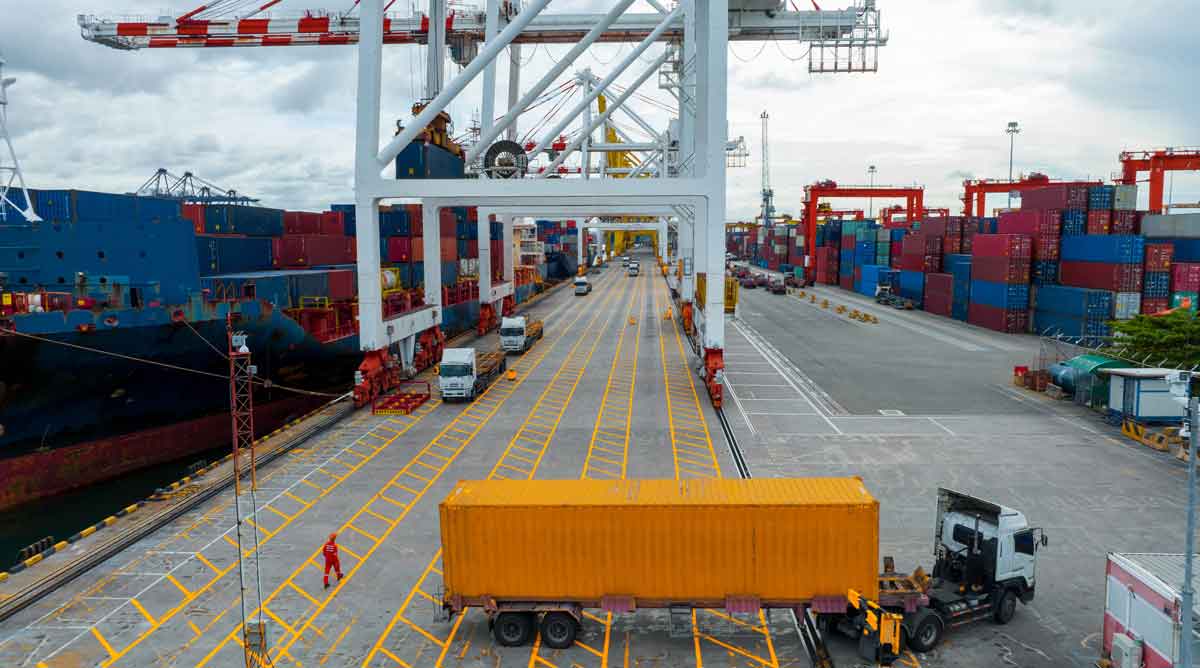
Delays in terminal operations can have far-reaching consequences. They can lead to congestion, increased operational costs, missed connections, and, ultimately, dissatisfied customers. The ripple effects of a single delay can impact the entire supply chain.
According to a study by the World Bank and IHS Markit, maritime transport delays increase trade costs by up to 1.4% for each additional day of delay.
Delays Are Commonplace
We know that delays wreak havoc on schedules, efficiency, and bottom lines. They can also lead to demurrage and detention charges. The infamous Los Angeles and Long Beach port delays in 2020-21 served as a notable example, highlighted by the port’s consideration to charge terminal dwell fees of $100 for containers that remained on the docks for extended periods.
While the events in LA captured the public’s attention, delays are commonplace worldwide. 2024 has seen delays at Rotterdam, Antwerp, and Southampton. By summer, overall congestion reached an 18-month high, with Singapore most heavily affected. Strikes in Germany were expected to affect ships heading for Hamburg and Bremerhaven.
Terminal operators face a great challenge in balancing meticulous planning with the flexibility to respond to sudden disruptive events. That’s why they are increasingly turning to graphical planning tools like Spinnaker to manage and mitigate unexpected delays.
What is a Graphical Planning Tool?
A graphical planning tool is software that visually represents terminal operations, including vessel and berth planning, container inventory, and yard space. These tools are often integrated with terminal operating systems (TOS) like Tideworks’ Mainsail to offer a comprehensive view of operations.
Terminal delays are caused by several factors: low infrastructure capacity, trade and container imbalance, custom delays, and unforeseen incidents are good examples. Now, insufficient digitization efforts are also under the spotlight as a weak point in the industry.
Graphical planning tools allow operators to visualize complex data and processes in an intuitive, easy-to-understand format. They enable quick identification of potential bottlenecks, efficient resource allocation, and rapid response to changes in real time.
Benefits of Using a Graphical Planning Tool
Real-Time Visibility
One of the primary advantages of graphical planning tools is the real-time visibility into terminal operations. When a vessel is delayed due to harsh weather conditions, a graphical planning tool can instantly show the impact on berth scheduling, yard operations, and connecting transportation.
Real-time visibility allows terminal operators to:
- Monitor the status of vessels, containers, and equipment at a glance
- Identify potential conflicts or bottlenecks before they occur
- Track the progress of operations against planned schedules
Operators’ improved ability to act swiftly has ramifications for broader supply chain issues. For example, a survey by McKinsey found that companies with greater supply chain visibility were 2.5 times more likely to report that they outperformed their peers in customer satisfaction.
Enhanced Decision Making
When faced with unexpected delays, quick and informed decision-making is essential. Above all, these tools change the game by integrating vessel, berth, yard, and rail planning features into a single workspace.
Graphical planning tools enhance decision-making processes by:
- Visualizing potential impacts of delays across different areas of operation
- Quickly identifying alternative solutions
- Providing data-driven insights to support strategic decisions
For instance, if a train carrying containers is delayed, the graphical tool can show how this affects yard capacity and suggest optimal locations for redirecting incoming containers. This visual representation allows managers to make informed decisions to minimize the impact of the delay.
Improved Coordination
Effective communication and collaboration are vital when dealing with unexpected delays. Graphical planning tools streamline coordination by:
- Providing a central platform for sharing information across departments
- Enabling real-time updates and notifications to relevant team members
- Facilitating collaborative problem-solving through shared visual data
For example, when a delay occurs, the operations team can use the graphical tool to communicate the situation to customer service, allowing them to inform affected clients and arrange alternative solutions proactively.
Best Practices for Implementing a Graphical Planning Tool
Terminal operators are hesitant to start from scratch. They know that pen and paper are not reliable and prone to user error. They have adopted new technology, in some cases a popular TOS like Mainsail, and they are looking for software that complements how they already work.
To maximize the benefits of a graphical planning tool, consider the following best practices:
- Select the right tool for your terminal’s needs:
- Assess your operational requirements. Include factors like scalability
- Evaluate the tool’s compatibility with your current TOS
- Consider vendors with experience and systems integration expertise
- Integrate with existing systems and workflows:
- Ensure seamless data flow between your graphical planning tool and other operational systems
- Align the tool’s functionalities with your established processes
- Customize the tool to reflect your terminal’s unique layout and operations
- Train and onboard staff effectively:
- Provide comprehensive training on the tool’s features and capabilities
- Encourage hands-on practice and experimentation in a controlled environment
- Designate “power users” who can assist their colleagues
- Continuously refine and update:
- Regularly gather feedback from users to identify areas for improvement
- Stay updated with the latest features and upgrades offered by the tool provider
- Periodically review and adjust your usage of the tool to ensure it aligns with evolving operational needs
 Planning For the Long-Term
Planning For the Long-Term
By providing enhanced visibility, supporting informed decision-making, and optimizing yard space, these planning tools enable terminals to turn potential crises into manageable situations. Soon, they will no longer be an option but a necessity.
Are you looking for a graphical planning tool that can be implemented in a way that does not interrupt your current workflow?
Are you looking for a tool that integrates with your existing TOS and offers extensive support?
Contact us today to learn more about what Spinnaker can do for your terminal.
